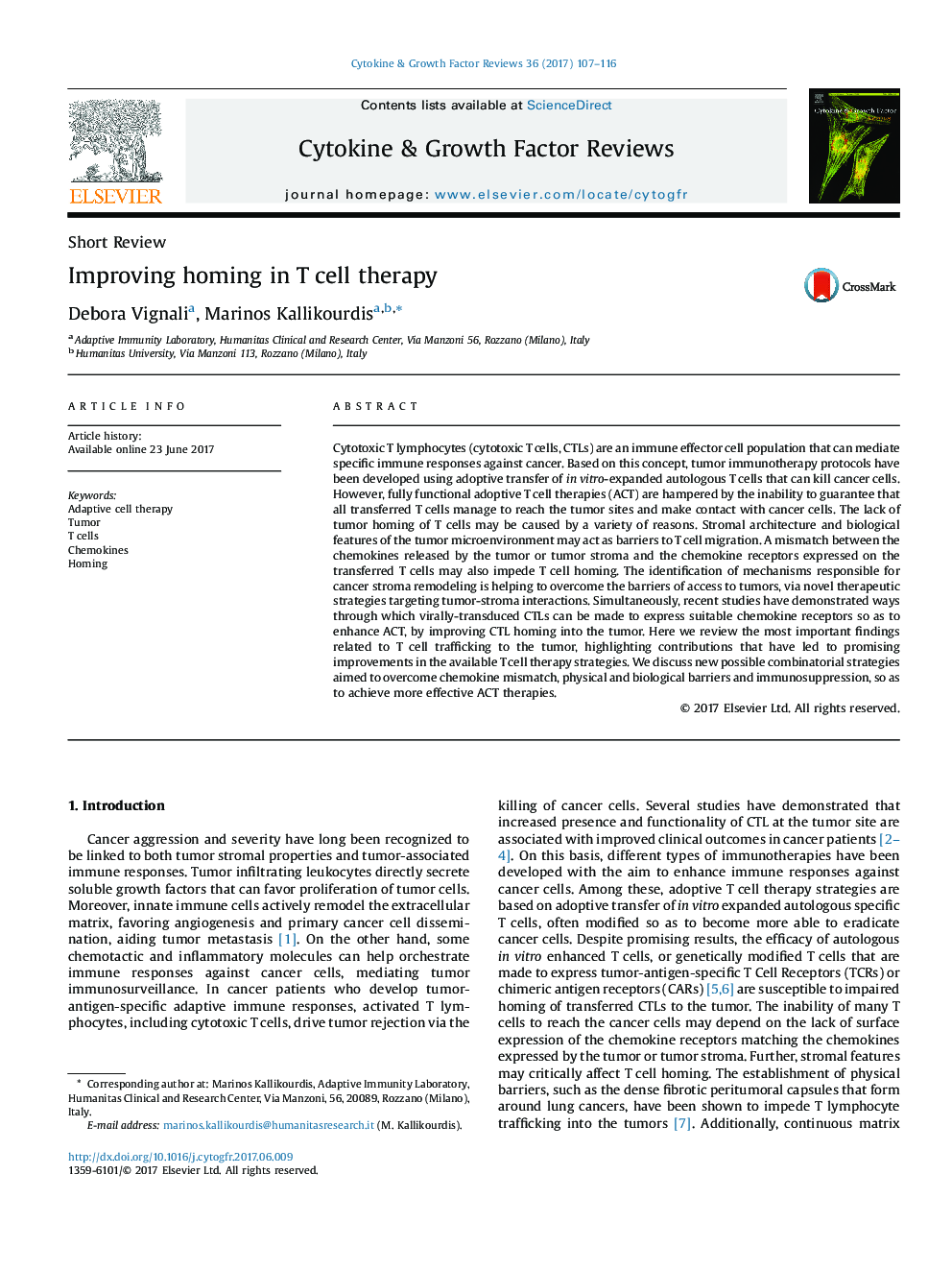| کد مقاله | کد نشریه | سال انتشار | مقاله انگلیسی | نسخه تمام متن |
|---|---|---|---|---|
| 5531196 | 1549488 | 2017 | 10 صفحه PDF | دانلود رایگان |

- Tumor immunotherapy protocols have been developed using adoptive transfer of in vitro-expanded autologous T cells that can kill cancer cells.
- However, tumor homing of T cells may be inhibited by several mechanisms.
- Stromal architecture, tumor microenvironment and mismatches between the tumor chemokines and T cellchemokine receptors interfere with homing.
- The identification of mechanisms responsible for cancer stroma remodeling is helping overcome the barriers associated with T cell homing.
Cytotoxic T lymphocytes (cytotoxic T cells, CTLs) are an immune effector cell population that can mediate specific immune responses against cancer. Based on this concept, tumor immunotherapy protocols have been developed using adoptive transfer of in vitro-expanded autologous T cells that can kill cancer cells. However, fully functional adoptive T cell therapies (ACT) are hampered by the inability to guarantee that all transferred T cells manage to reach the tumor sites and make contact with cancer cells. The lack of tumor homing of T cells may be caused by a variety of reasons. Stromal architecture and biological features of the tumor microenvironment may act as barriers to T cell migration. A mismatch between the chemokines released by the tumor or tumor stroma and the chemokine receptors expressed on the transferred T cells may also impede T cell homing. The identification of mechanisms responsible for cancer stroma remodeling is helping to overcome the barriers of access to tumors, via novel therapeutic strategies targeting tumor-stroma interactions. Simultaneously, recent studies have demonstrated ways through which virally-transduced CTLs can be made to express suitable chemokine receptors so as to enhance ACT, by improving CTL homing into the tumor. Here we review the most important findings related to T cell trafficking to the tumor, highlighting contributions that have led to promising improvements in the available T cell therapy strategies. We discuss new possible combinatorial strategies aimed to overcome chemokine mismatch, physical and biological barriers and immunosuppression, so as to achieve more effective ACT therapies.
Journal: Cytokine & Growth Factor Reviews - Volume 36, August 2017, Pages 107-116